Written by librarians Jane Miller and Lois McEvey
The modernist art world in Melbourne of the 1930’s flourished as new artists’ societies provided platforms for aspiring artists, alongside the creativity and stimulation provided by John and Sunday Reed at Heide and the Boyd family at Murrumbeena. Lina Bryans, while exhibiting and participating widely, followed her own road, and became a key figure, both as a practising artist and as a support for others: opening her homes to provide a welcoming place for artists and writers.
As a latecomer, she was neither a pioneer modernist nor a 1950’s radical. She worked in the modern style in her own distinctive manner, overtaking Frater and the early modernists as her career developed.1
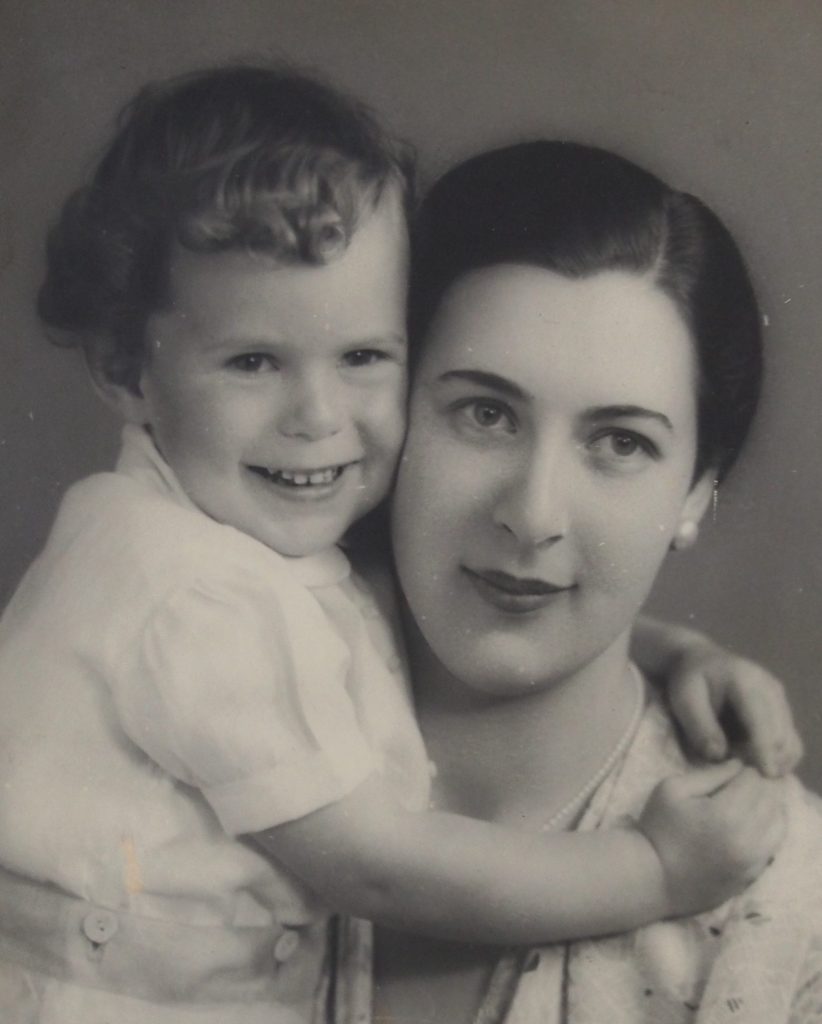
This post draws on the Lina Bryans’ archive, illustrating some of her personal story whilst also providing insights into the wider world of modern art in Melbourne. Lina mixed with many artists, visited exhibitions and explored the collections of the Public Library now State Library Victoria, coming to her own art practice in her late twenties. Lina combined her early career with being a single mother to a son, Edward Ashley born in 1932. Edward attended boarding school from an early age.
A chance meeting with modernist painter, William ‘Jock’ Frater, in 1936 set her on this new path. Frater gave Lina a paint box and colour became a key source of inspiration for her works. Self-taught and a believer in the role of instinct in creating good art, Lina wrote:
… art is instinctive. It is just how much the artist has in himself to express that makes it important. The material, the methods, even a great technical facility are ultimately of no avail if the instinctive emotion for fusing colour and form with life is lacking.2
Frater was very impressed with Lina – he considered that she possessed a wonderful artist’s talent, combined with great style and beauty.
When Frater went on holidays in the summer of 1936-1937, Lina used his city studio, and by his return, Lina had
… finished painting, an abstract in delicate greys, pinks and mauves, inspired by an arrangement of irises on the pale marble mantlepiece of his studio.3
After sharing a studio with Frater, Lina later moved to her own studio. Watercolourist Ian MacKinnon was also a source of inspiration. ‘There is no doubt the Bryans learnt much from MacKinnon about modern French art, including Monet, Cezanne and Matisse.’ 4
Lina’s work was first exhibited at the Heidelberg Art Show of 1937. Her works: Still life, basket of fruit; and Back yards, South Yarra, were well received. Herald art critic Basil Burdett wrote:
A newcomer is Lina Bryant [sic] whose Back yards (No 144) is also the most attractive in colour. This is one of the best modern landscapes I have seen here. (Herald, 3 May 1937, p 7)
The Herald chose Back yards, South Yarra for inclusion in The Herald exhibition of outstanding pictures in the same year. Sir Arthur Streeton opened the show and Lina exhibited with friends Jock Frater, Adrian Lawlor, Dora Serle and Sybil Craig.
Lina first exhibited with the Melbourne Society of Women Painters in October 1940 and was involved with the society for over twenty years. At this first exhibition, Lina exhibited with Sybil Craig, Ola Cohn, Eveline Syme, Dora Serle, Ada May Plante and Isabel Tweddle.
What is significant, and distinguishes most of these women artists with whom Bryans identified, is their early emancipation attitude towards modernism and their determination to work with their own chosen style regardless of public recognition or commissions.5
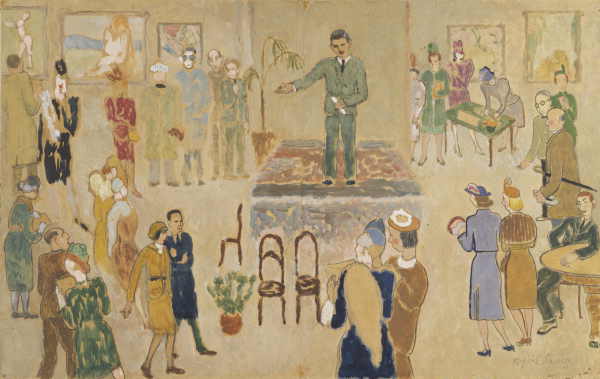
Oil painting by Sybil Craig. This work is in copyright; H98.219/1
Amongst Lina’s papers is this postcard (below) featuring Darebin Bridge House on the left. The landscapes and views of Ivanhoe and surrounds continued to draw artists, who would paint their beauty. It was on one such trip that Lina accidentally discovered the old hotel, while searching for a vibrant landscape to paint.
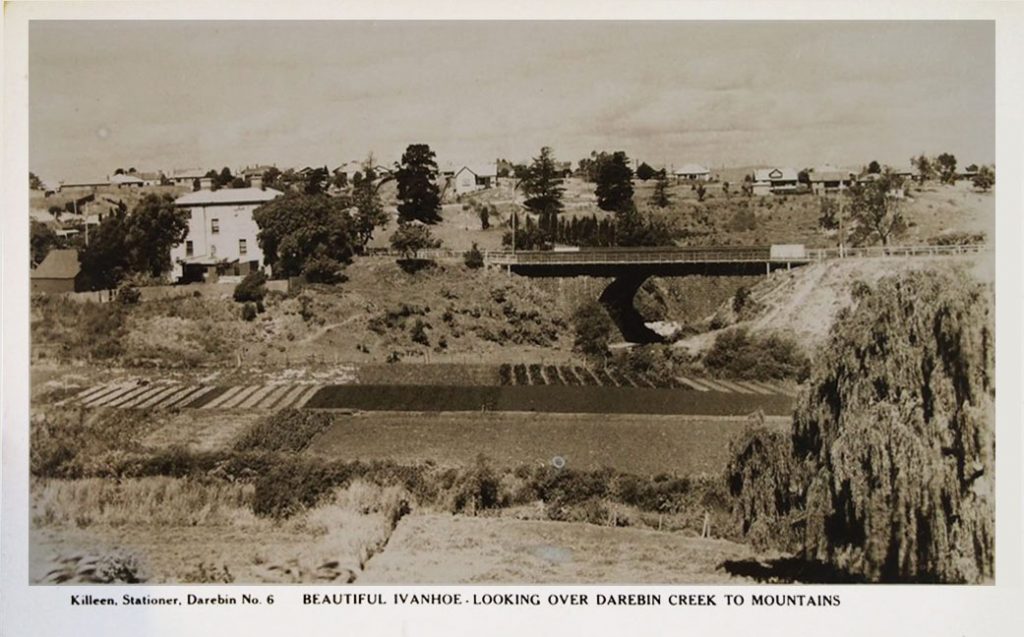
Out walking one day, Lina was bitten by a dog, and local resident and artist Ada May Plante came to her aid. A bond was formed, and as Lina was looking for a new studio and a place not too far from the city, she joined the hotel’s household in 1940 – sharing it with a family, an old-age pensioner, Mr Pratt, and modernist artist, Ambrose Hallen.
Hallen wanted to buy the hotel but decided it was not for him and built instead at Warrandyte. Lina bought the place in 1942 and transformed Darebin House into the ‘Pink Hotel’ – making structural changes, painting the walls and floors in bright colours and the exterior a warm pink.

The Pink Hotel became a gallery in itself:
Pictures are everywhere, even in the kitchen, and among them are many portraits – of Jean Campbell, the Australian authoress; the late Ambrose Hallen, Australian artist who lived for many years in Paris, and R.W Wilkinson. One small sitting room she calls the Fairweather Room is lined by pictures of Ian Fairweather … she explained she was always adding to the furnishings. (Herald, May 29 1944, p 7)
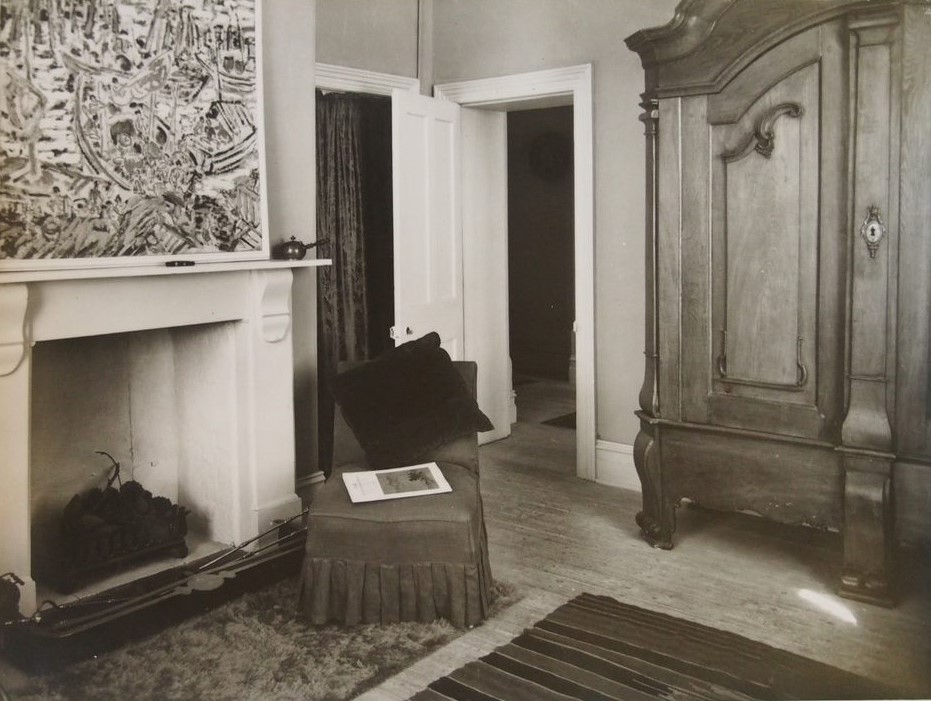
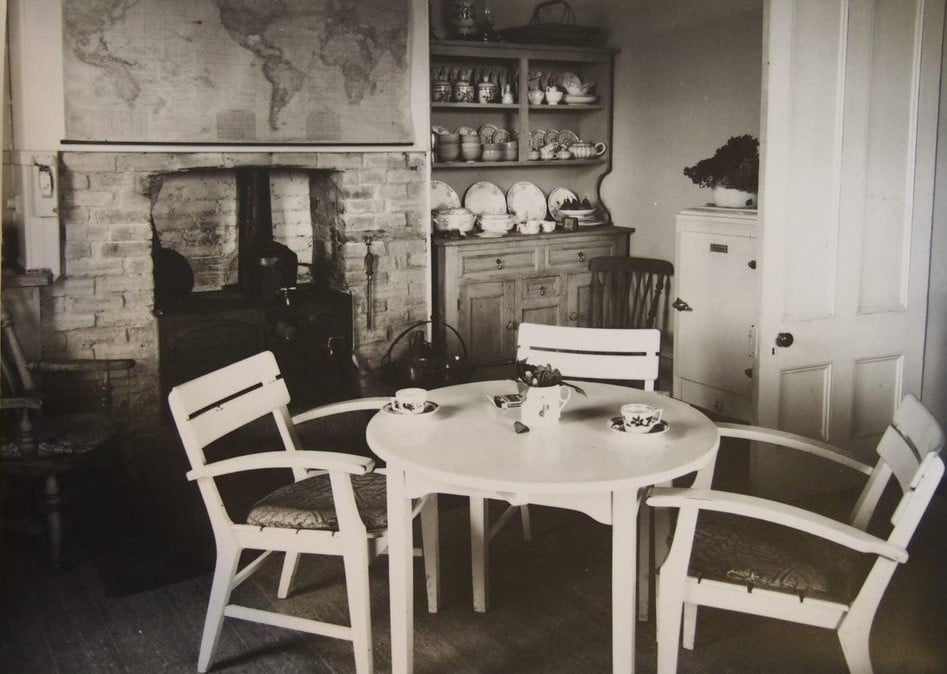

The ‘Pink Hotel’ became a welcoming gathering place for artists and writers, and continued to be a home for Ada May Plante. Ian Fairweather was a resident for two years and Frater used an old shed in the garden and converted it into a studio. Visitors who were made welcome were: Danila Ivanovich Vassilieff; Adrian Lawlor; Daryl and Joan a Beckett Lindsay; Alan John ‘Jock’ Marshall and nearby residents May and Norman Macgeorge; theatrical producers Doila and Rosa Ribush; Jean Campbell; Vance and Nettie Palmer; and Judah Leon Waten.
Lina painted over 70 portraits, mostly springing from a personal connection to the subject. Her first portrait was of Ambrose Hallen. Her most well-known, The babe is wise, is of writer and friend, Jean Campbell. You can see a photo of Campbell with Lina’s portrait below:

Campbell’s novel of the same title was one of the first fiction pieces to explore the migration experience in Anglo-Australia. 6 Lina’s painting of Campbell was first shown in November 1940 at Tye’s Velasquez Gallery, and is held now by the National Gallery of Victoria.
In her portraits, Lina sought to express the personality of the person with colour and pigments and thought it important for these elements to reflect one another.
The photo below shows Lina at work on her portrait of writer, Nettie Palmer, in 1958. The painting now hangs in the National Library, Canberra along with several other portraits. Lina had a close friendship with Nettie and Vance Palmer, and was involved in the committee which published the Meanjin special edition celebrating the Palmers’ contribution to Australian literature.7
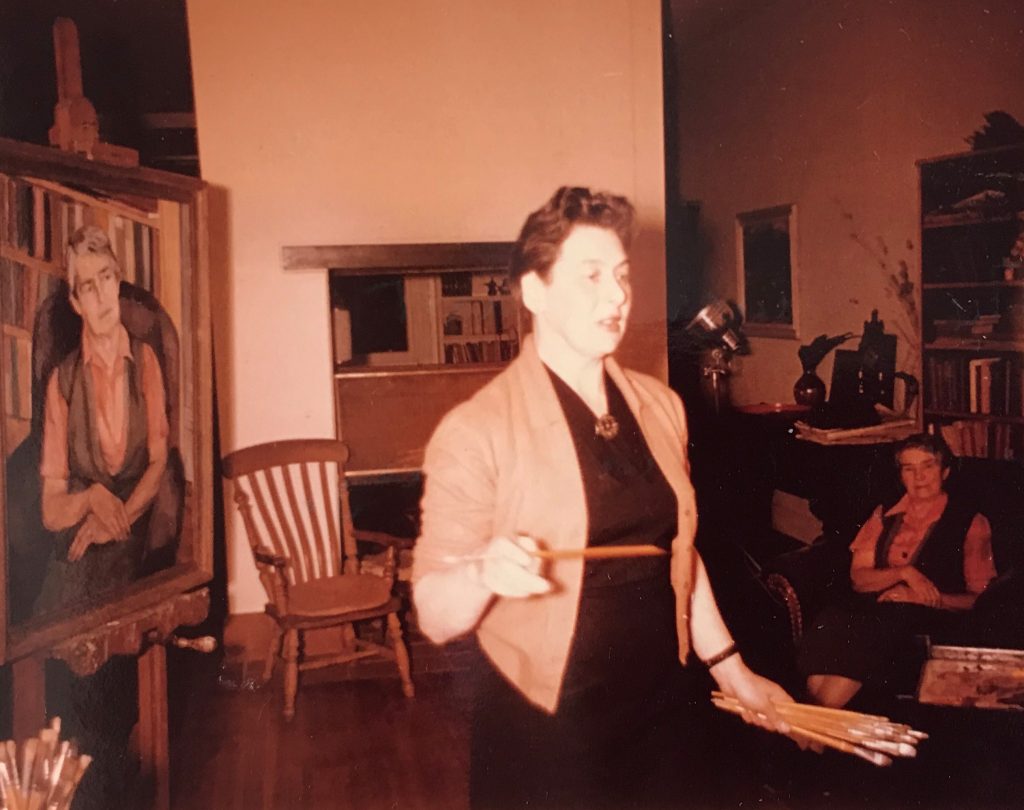
Adrian Lawlor, painter and writer, was a founding member and secretary of the Contemporary Arts Society, and an early contemporary of Lina’s. Tristan Buesst was the first president of the Friends of the La Trobe Library, and instrumental in building the Library’s collections of Australiana and making the collection a focus for scholarly research.


Right: Portrait of Tristan Buesst, Esquire, 1960; H89.207
These works are in copyright. Used with permission of the Estate of Lina Bryans.
Lina’s circle of friends included Laurence Nicholas Barrett ‘Laurie’ Thomas, pictured below in Ambrose Hallen’s studio at Darebin House. Laurie worked as an art critic with The Herald, and from 1952 had a career in art galleries in Victoria, Western Australia and Brisbane.
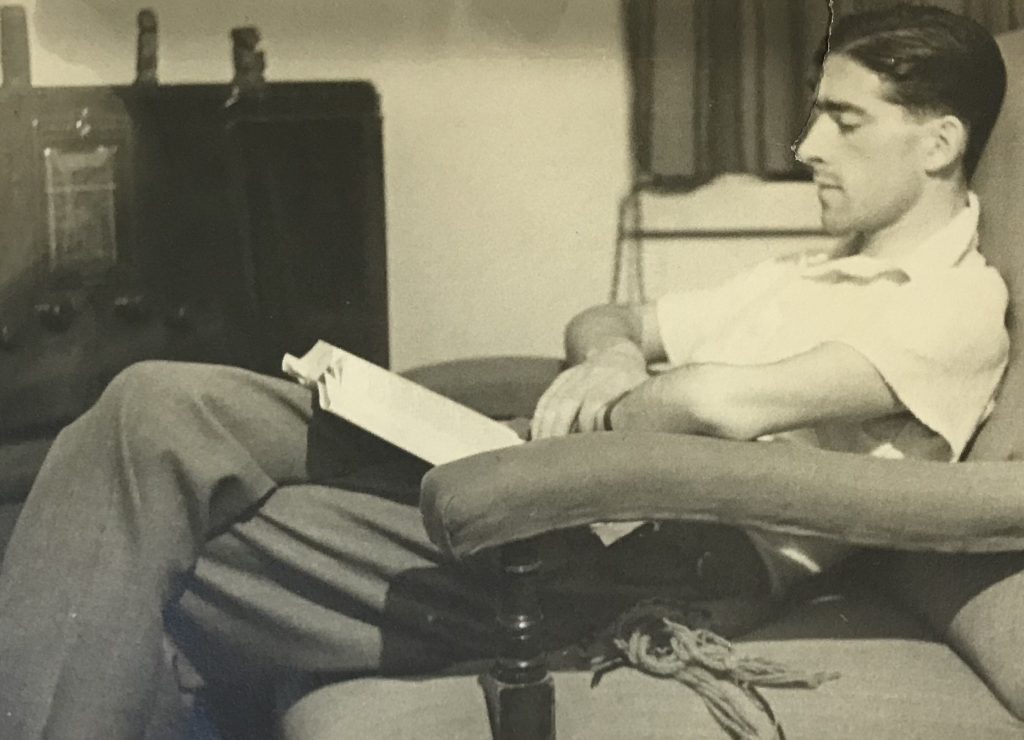
(MS 9420, Box 7)
Clem Christesen was the founding director of literary journal Meanjin, published in Melbourne from 1945. In February of that year Clem and his wife Nina relocated from Brisbane to Melbourne. Bryans recognised and valued Nina Christesen’s contribution to cultural debate as an individual, without a political platform, at a time when to be a woman and a migrant was generally to be excluded from the mainstream.8 Lina inscribed on the back of her portrait, ‘For my loved friend Nina Christesen. Happily we meet again.’9 Lina’s first solo exhibition in 1948, at Georges Gallery, included a portrait of Nina.
1948 was also a year of change as Lina moved on from the ‘Pink Hotel’ to Harkaway, near Berwick, where she found freedom away from Frater and her connections with the hotel. In 1953, Lina travelled to the United States and France. At an exhibition in France, she saw Picasso and introduced herself to him. Shortly afterwards, Lina painted Figure Composition – a double portrait which evinced ‘a deliberateness unseen in her earlier paintings, which often revealed in their colour and vigorous brushwork, a deeply felt emotion.’10
Moving back to Melbourne in 1954, Lina was invited by Jean Campbell to join the first Moomba Book Fair on behalf of PEN International as artistic director. She enlisted support from friends Harald Vike, Frank Stone, Alex Jelinek and Barry Kaye. Further work in the book world included designing book jackets, including the new Cheshire edition of Vance Palmer’s novel, The Passage, and Bush Christmas by Ralph Smart and M. Cathcart Borer, which was published by Pitman in 1947.
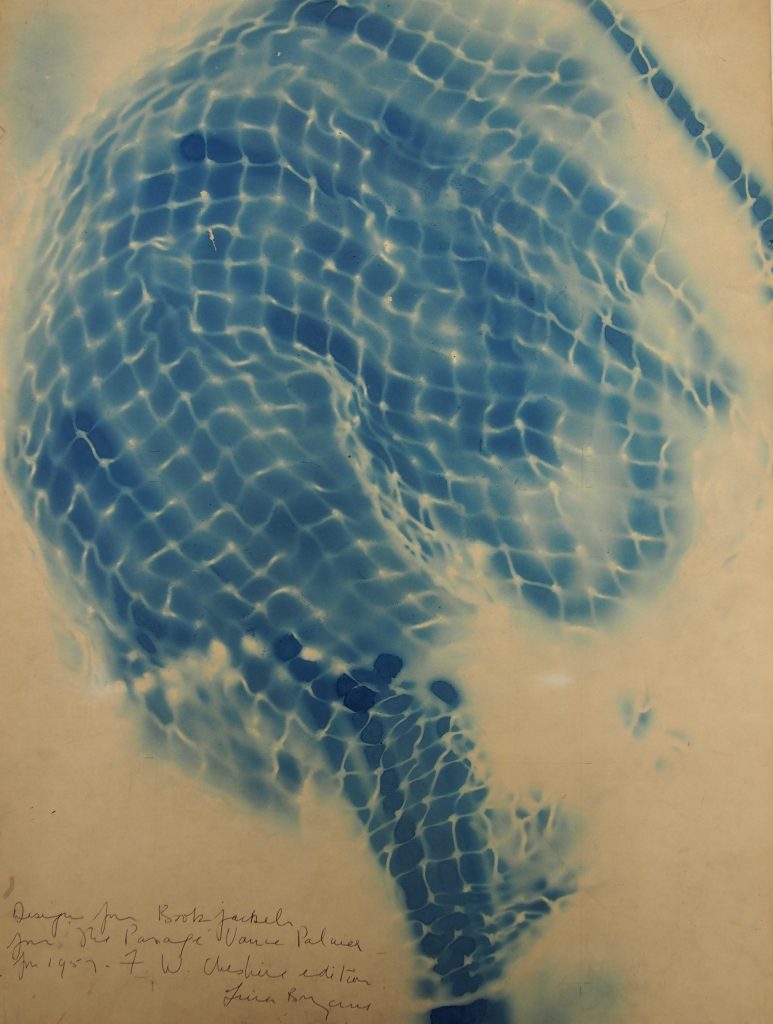
Lina’s second solo exhibition, Exhibition of oil paintings and pastels, held in July 1966 at Georges Gallery included portraits, landscapes and abstracts.
During the 1960’s Lina experienced ill-health. Despite being in bed with a fractured ankle she continued to paint, and still managed to organise the event program accompanying NGV’s 1961 centenary exhibition, Turner and Blake watercolours. This hand-drawn card from the collection illustrates Lina’s energies and capacities:

(YMS 15668, Box 3/10)
This work is in copyright.
Reproduced with permission from the estate of Henri Lavie.
At this time Lina also took a new direction in her art: ‘She let her brush loosen, and moved into more forms in her landscapes and still life.’11
Lina continued to paint and exhibit into the 1970s. Her early works had included landscapes – many set around Warrandyte, Eltham and Plenty – and later travels inspired scenes from Central Australia to the Lerderderg Gorge; the Snowy Mountains to Mallacoota.

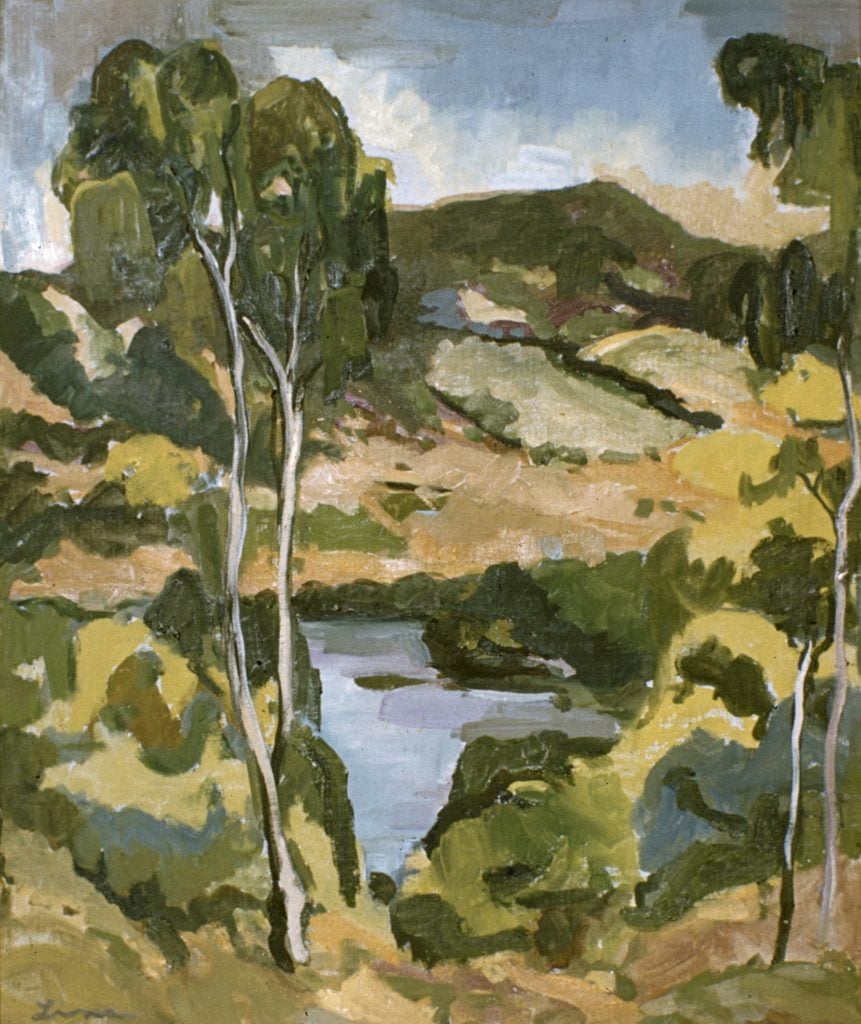
These works are in copyright. Used with permission of the Estate of Lina Bryans (MS 9420, Box 5/2)
Continuing her generosity as supporter and friend, Lina wrote the following tribute in the catalogue for Sybil Craig’s 1978 exhibition at Jim Alexanders’ Important Women Artists Gallery:
In the work of Sybil Craig there is the sensitivity of a fine artist and a perceptive observer, whose being and thought are directed towards expressing in all media the essence of animate and inanimate objects with vision, originality and vibrant colour … this selection … represents a very important part of her achievement.12
Lina’s inclusion in this series of portraits of Australian artists by photographer Richard Beck acknowledged her role and contribution to the artistic community.
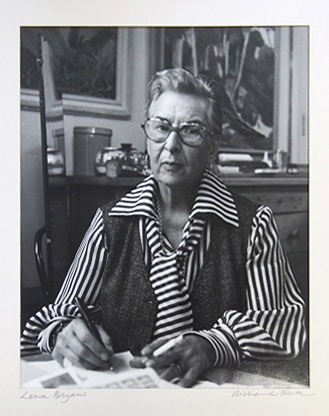
This work is in copyright.
Used with the permission of the Estate of Richard Beck; H36323
This recognition was further acknowledged in 1982 with the National Gallery of Victoria exhibition: Lina Bryans: a retrospective exhibition – travelling from Banyule Gallery, to Geelong and Ballarat. At the opening, author Murray Bail spoke of ‘the tireless sympathy she had poured into the lives and careers of others (most notably of the great reclusive painter Ian Fairweather) and of the work she did to create a series of attractive houses where she would welcome painters, writers, actors and intellectuals to the wonderful dinners she cooked and the exhilarating parties she threw.’ 13
Lina was awarded the Medal of the Order of Australia (OAM) in the Queen’s Birthday Honours of 1994 for ‘service to the visual arts as a landscape painter.’ What a remarkable life Lina led – her work, life and generosity – an inspiration to many.
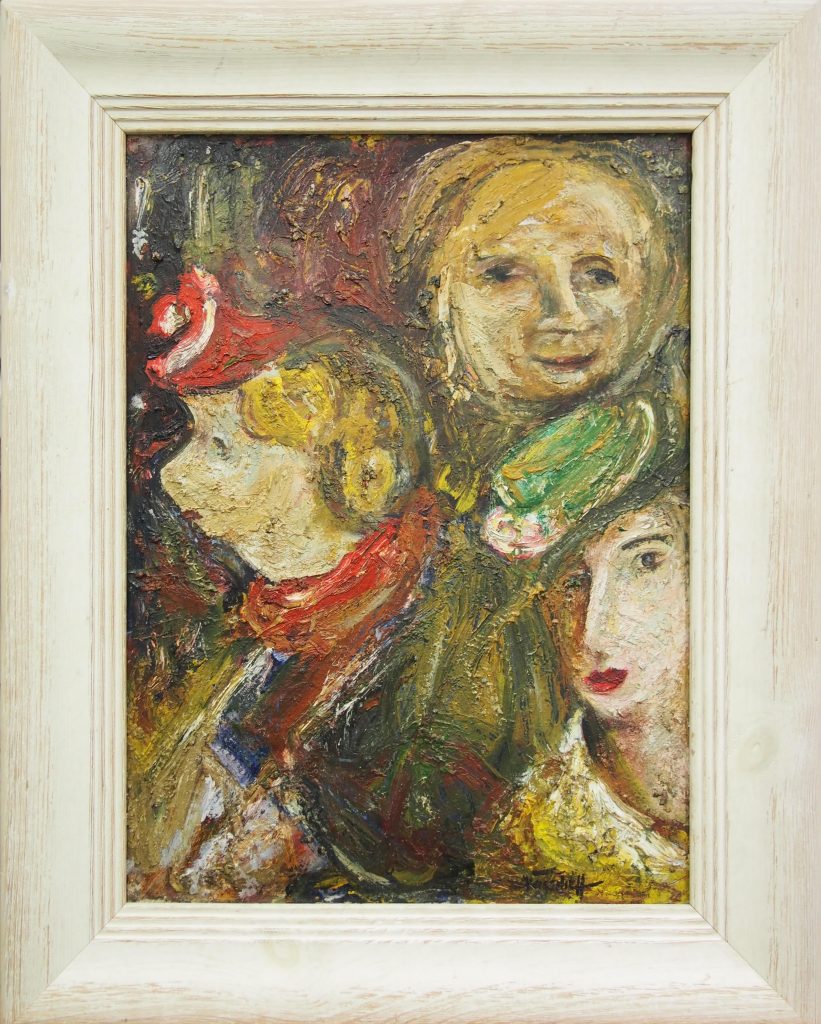
Copyright Heide Museum of Modern Art, Melbourne; H2014.1054
With thanks to James and Paul Bryans for their generous permission to use works from the Estate of Lina Bryans in this blog.
Further resources
Bowen, Jennifer, The pink house, Hindsight, ABC Radio
Bryans, L, 1983, Lina Bryans : a retrospective exhibition, National Gallery of Victoria, Melbourne
Bryans, L & Blackman, B, 1989, Lina Bryans interviewed by Barbara Blackman [sound recording]
Forwood, G, 1995, The Babe is wise : Lina Bryans and her portraits, University of Melbourne, Museum of Art, Parkville
Forwood, G, 2003, Lina Bryans : rare modern 1909-2000, Miegunyah Press, Carlton
National Gallery of Victoria, Lina Bryans works at NGV
References
- Forwood, G, 2003, Lina Bryans : rare modern 1909-2000, Miegunyah Press, Carlton, p 142
- As above, p 69
- As above, p 19
- As above, p 18
- As above, p 31
- Cerne, H, 2010, ‘The babe is wise’, Hecate, vol 36, no 1-2
- Meanjin, vol 18 no 2, 1959. Available online from home for Victorian registered users.
- Forwood, G, 2003, Lina Bryans : rare modern 1909-2000, Miegunyah Press, Carlton, p 142
- As above, p 95
- Bryans, L & National Gallery of Victoria, 1983, Lina Bryans : a retrospective exhibition, National Gallery of Victoria, Melbourne, Vic, p 7
- Forwood, G, As above, p 143
- Jim Alexander’s Important Women Artists Gallery, Sybil Craig oil paintings 1926-1970, Jim Alexander Gallery, East Malvern, p 3
- Garner, H, ‘Lina Bryans’, The Age Saturday Extra, 11 March 1995, p 10


Dear Jane Miller, thank you for this excellent snapshot of Lina Bryans’s life using the SLV materials. Some very fresh images here! She figures prominently in my forthcoming book ‘Growing Up Modern: Canberra’s Round House and Alex Jelinek’ Halstead Press Sydney 2022. I am also working on Lina’s paintings of the Snowy and hope we can be in touch. Thanks again
Thank you Roger for that lovely feedback. It was hard to make the selection on images from Lina’s papers!
Your forthcoming book sounds wonderful – and to have Alex’s work celebrated too – he is to be included in a forthcoming post on emigre architects – we fortunately have some photographs taken by Peter Wille.
Thanks again!
Thank you Jane and Lois for your most useful work on Lina Bryans. I visited Lina (a relative) in the late 1960s at Erin Street. Arthur Wallach, her cousin, poet and portrait subject was a friend of mine. I have copies of his letters to Lina (held in the SLV with Lina’s papers, as you probably know). They are marvellous and invaluable for work I’m undertaking on his poems, prose and correspondence.
Hello Margaret – thank you for your comment – we are glad that you enjoyed reading the post. Lina sounded like an amazing person, at such an interesting time too. There was much to choose from to include! All the best with your work on Arthur Wallach.
Hey Jane, That get well card was done by my father Henri Lavie. Lina was my godmother. I’d like to ensure that SLV know this.
Hello Dominique – thank you for contacting us I have credited the image in the post above, and also passed you details on to Collection staff, to add to the collection documentation. It is a wonderful image and captures Lina’s energies so well.
Hello Jane and Lois,
thankyou for this fine overview of Lina’s life, art and relationships. I did my PhD, Circling Lina. about Lina Bryans’ art and partnerships and have published several stories and poems about her friends and art. You have quoted my story in Hecate about Jean Campbell. Recently at the Willy Lit festival 2023 I launched a poetry collection titled Artful Women , published by ICOE press, In Case of Emergency Press exploring 40 women artists and writers that have been overlooked or forgotten by history and should be better known, plus 22 poems are written to and for Lina Bryans and the impact of her art on my life.
Hello Helen – many thanks for reading and your generous comments too. Lois and I both enjoyed writing the post very much, Lina sounds like a remarkable person – evidenced through her works and wider contributions. I see we have your book in the collection – so will look forward to exploring these artists and writers too.
Dear Helen Cerne,
very interested to read your comment and of your longstanding interest in Lina. I am sorry I didn’t know of your PhD diss. when writing my Growing up Modern book which came out last year with Halstead Press in Sydney.
I would be curious to learn more about your work on Lina – is there an abstract or a copy of your thesis perchance? Please contact me at the U of Sydney: Roger.Benjamin@sydney.edu.au
Hello Jane,
My family had a long association with Lina (and Alex), starting from Lina’s time living at Harkaway on the neighbouring property to my grandparents and my father in perhaps the late 1940’s to early 1950’s.
Lina took the credit of introducing my father to my mother during that time. She painted a portrait of my father over several sittings and presented it to my grandmother, Elsie Gurling.
My parents married and moved to a soldier settlement dairy farm in Gippsland and kept in touch with Lina over the ensuing years and visited our farm with Alex when we were very young, presumably on camping holidays.
Another time, Alex was riding the bike he made through Gippsland and probably camped on our property, but hard to remember details.
There are more tales to tell about our ongoing communications, but I will stop here and continue if you would like to hear more and see the portrait some time.
Thanks for your blog and communication of stories.
Jane Gurling
Hello Jane – thank you for sharing those stories with us – that is wonderful to have a portrait of your father, painted through such a connection, and for you to have those memories too. Lois and I would love to see the portrait – I’ll email you directly.
Best wishes
Jane